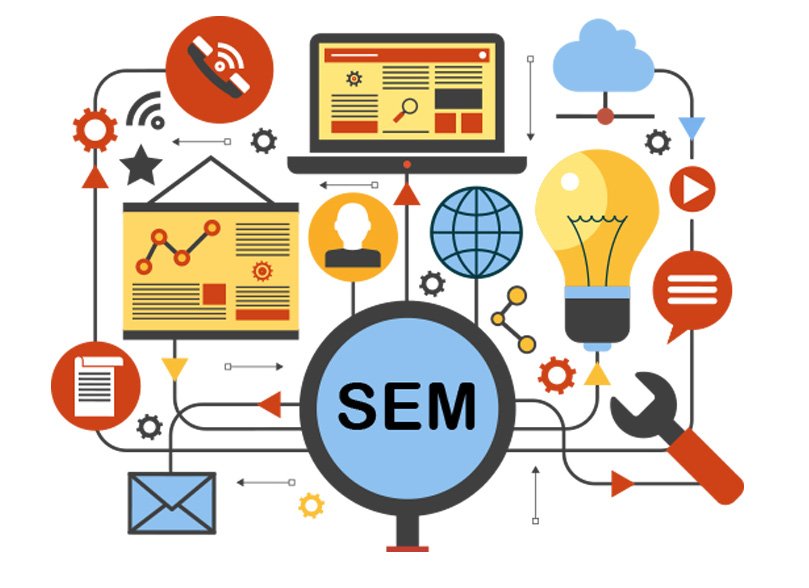The Ultimate Guide to Search Engine Marketing (SEM)
Search Engine Marketing (SEM) is a crucial component of digital marketing that focuses on promoting websites by increasing their visibility on search engine results pages (SERPs) through paid advertising. With the ever-growing importance of online presence, businesses are investing heavily in SEM to reach their target audiences effectively and efficiently. This comprehensive guide will explore the fundamentals of SEM, its benefits, strategies, tools, and best practices to help you harness its potential.

What is Search Engine Marketing?
Search Engine Marketing refers to the practice of using paid advertisements to appear on search engine results pages. Unlike Search Engine Optimization (SEO), which focuses on organic traffic, SEM involves paying for ads to ensure your website or product is prominently displayed. SEM typically operates on a pay-per-click (PPC) model, meaning advertisers pay a fee each time a user clicks on their ad.
Key Components of SEM
Keywords
Ad Copy

Ad Auctions
Landing Pages
Popular SEM Platforms
Google Ads: The most widely used platform, offering a range of ad formats, including search ads, display ads, and shopping ads.
Microsoft Advertising: Targets users on Bing, Yahoo, and other partner networks.
Amazon Advertising: Ideal for e-commerce businesses looking to advertise products directly on Amazon.
Social Media Ads: Platforms like Facebook and LinkedIn also integrate SEM strategies to target specific audiences.


Best Practices for SEM Success
Define Clear Goals: Identify what you want to achieve, such as brand awareness, lead generation, or sales.
Focus on Quality Score: Improve your ad’s relevance and landing page quality to lower CPC and enhance performance.
Leverage Negative Keywords: Exclude irrelevant searches to avoid wasting your budget.
Stay Updated: Keep up with changes in search engine algorithms and advertising trends.
Invest in Retargeting: Target users who have interacted with your website but didn’t convert.
Key Strategies for Effective SEM
1. Keyword Research
Keyword research is the backbone of SEM. Use tools like Google Keyword Planner, SEMrush, or Ahrefs to find relevant keywords with high search volume and low competition.
2. Crafting Compelling Ad Copy
Your ad copy should:
Highlight unique selling propositions (USPs).
Include a clear call-to-action (CTA).
3. Optimizing Landing Pages
Ensure that your landing pages:
Match the intent of your ads.
Load quickly.

4. Bid Management
Set appropriate bids for keywords to ensure your ads appear in competitive spots. Use manual bidding for more control or automated bidding to save time.
5. A/B Testing
Regularly test different versions of your ads, including headlines, descriptions, and CTAs, to identify the most effective combinations.
6. Monitoring and Analytics
Track key performance indicators (KPIs) like click-through rate (CTR), cost-per-click (CPC), conversion rate, and quality score. Use these insights to refine your campaigns.
SEM vs. SEO: What's the Difference?

Cost
SEM is paid, while SEO focuses on organic strategies.

Speed
SEM delivers immediate results; SEO takes time.
Longevity
SEO provides long-term benefits, whereas SEM requires ongoing investment.
Popular SEM Platforms
The most widely used platform, offering a range of ad formats, including search ads, display ads, and shopping ads.
Targets users on Bing, Yahoo, and other partner networks.
Ideal for e-commerce businesses looking to advertise products directly on Amazon.
Platforms like Facebook and LinkedIn also integrate SEM strategies to target specific audiences.
Common Challenges in SEM
Popular keywords often come with high CPCs.
Repeated exposure to the same ad can reduce its effectiveness.
Small businesses may struggle to compete with larger companies.
Managing multiple campaigns across platforms can be overwhelming.
Search Engine Marketing is a powerful tool that can drive significant traffic and conversions when executed correctly. By understanding the fundamentals, leveraging the right tools, and implementing effective strategies, businesses can maximize their ROI and achieve their digital marketing goals. Whether you’re a seasoned marketer or new to SEM, staying informed and adapting to trends will ensure long-term success in this competitive landscape.



